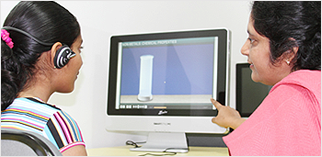As a parent, your biggest concern understandably is to find out what the NLC advantage is. How can an NLC help improve your child’s learning experience?
To understand, we need to compare the traditional teaching model with the NLC model.

Thus, the aim of the traditional teaching model cycle is to plod through the syllabus, using strategies that might make instruction too easy for some students, and too difficult for others, even though it might be just right for many. The below average students struggle, while there is a very real danger of the above average child losing interest.
In this cycle, assessment is the evaluation of the knowledge gained by the learner. It is rarely used as an aid to increase the effectiveness of instruction. In fact, students take testing to signal that the lesson and even learning is over.
Accountability for learning in this traditional teaching model is split between teachers and students. Teachers are responsible for presenting material and for coverage, and the students are responsible for learning. Whether students learn or do not learn is attributed to the intelligence and effort of the student. Once testing has ended, no effort is made to re-teach concepts or material that was not learned. Some students learn well under those conditions, but others do not; this outcome is considered acceptable.
At NLCs this outcome is not considered acceptable. The NLC model stipulates that the pace of instruction should be determined by student learning, and assessment data should be fed into the process of instruction to modify and improve lesson plans, instead of only for grading. Thus, assessment forms the start of the lesson planning process, rather than the end. Student progress towards attainment of objectives is constantly monitored.
Personalised attention to each student is the motto of NLCs.
